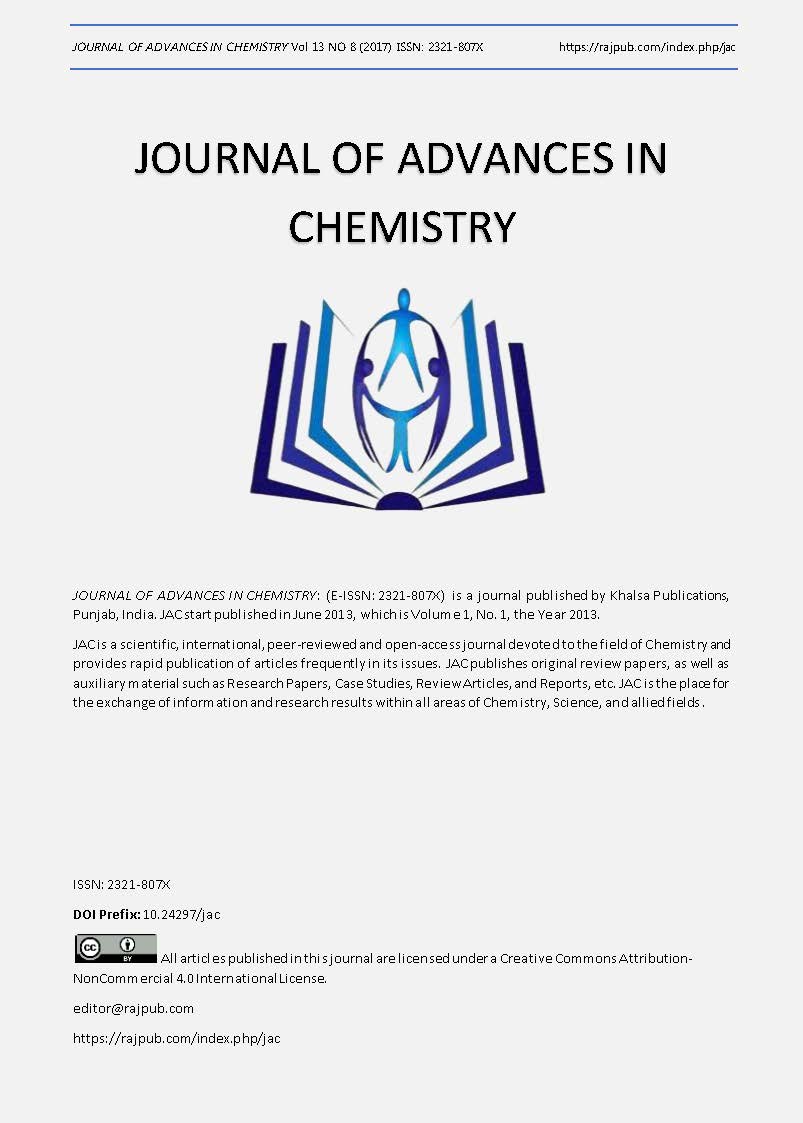An investigation of Drilling characteristics of Carbon-Carbon composites by Acoustic emission process
DOI:
https://doi.org/10.24297/jac.v13i8.5734Keywords:
Titanium coated tungsten carbide (Ti-WC), carbon-carbon composites, acoustic emission process, delamination factor, scanning electron microscope (SEM), torqueAbstract
Titanium coated tungsten carbide (Ti-WC) drill bit was used for drilling on the carbon-carbon composites laminates. The drilling speed was varied between 1000 to 3000 rpm with different feed rate of the drill. With respect to the time, the thrust force exerted on the laminates and the torque induced were assessed through acoustic emission process. The delamination factor (Fd) has been determined from the top surface of the drill holes through scanning electron microscope (SEM) images. The results obtained from the test specimen depending on the variation of the feed rate and the speed of the drill were discussed in detail.Â
Downloads
References
2. Xiaolei Chen, Lijing Xie, Xiaohui Nan, Jinghua Tian, Wenziang Zhao, 2016, Procedia CIRP, Vol.46, pp.319 – 322.
3. Seung-Chul Lee, Seong-Taek Jeong, Jong-Nam Park, Sun-Jin Kim and Gyu-Jae Cho, 2008, Study on drilling characteristics and mechanical properties of CFRP composites, Acta Mechanica Solida Sinica, Vol. 21, No. 4, pp. 364 – 368.
4. H. Hochenga, C.C. Tsao, 2005, The path towards delamination-free drilling of composite materials, Journal of Materials Processing Technology, Vol.167, pp.251–264.
5. Fabian Lisseka, Jacqueline Tegasa, Michael Kaufelda, 2016, Damage quantification for the machining of CFRP: An introduction about characteristic values considering shape and orientation of drilling-induced delamination, Procedia Engineering, Vol.149, pp.2 – 16.
6. Navid Zarif Karimi, Hossein Heidary, Mehdi Ahmadi, 2012, Residual tensile strength monitoring of drilled composite materials by acoustic emission, Materials and Design, Vol.40, pp.229–236.
7. Hamstad, M.A., 1986, A Review: Acoustic Emission, a Tool for Composite materials Studies, Experimental Mechanis, Vol.26, pp.7-13.
8. Awenbruch, J. and Ghaffari, S., 1988, Monitoring Progression of Matrix Splitting During Fatigue Loading Through Acoustic Emission in Notched Unidirectional Graphite~Epoxy Composites, Reinforced Plastic Composites, Vol. 7, pp.245-264.
9. Ravishankar, S.R. and Murthy, C.R.L., 2000, Characteristics of AE During Drilling Composites Laminates, NDT&E Int., Vol.33, pp.341-348.
10. Tahi Tawakoli, 2011, Advanced Materials Research, Trans Tech Publications, Advances in Abrasive Technology XIV, Vol. 325, 1 – 767, Suttgard, Germany.
11. R. Zitoune, V. Krishnaraj, F. Collombet, S. Le Roux, 2016, Composite Structures, Vol.146, pp.148-158.
12. Vijayan Krishnaraj, Redouane Zitoune, J. Paulo Davim in Drilling of Polymer-Matrix Composites, Series Editor J. Paulo Davim in Springer Briefs in Applied Sciences and Technology, Manufacturing and Surface Engineering, 2013, Springer.
13. S. Arul, L. Vijayaraghavan, S.K. Malhotra, 2007, Online monitoring of acoustic emission for quality control in drilling of polymeric composites, Journal of Materials Processing Technology, Vol.185, pp.184–190.
14. A.A. Abdul Nasir, A.I. Azmi, A.N.M. Khalil, 2015, Measurement and optimisation of residual tensile strength and delamination damage of drilled flax fibre reinforced composites, Measurement, Vol.75, pp.298–307.
15. I Paul Theophilus Rajakumar, P Hariharan and I Srikanth, 2012, A study on monitoring the drilling of polymeric nanocomposite laminates using acoustic emission Journal of Composite Materials, Vol.47(14), pp.1773–1784 .
16. Komanduri R, Turkovich BF, 1981, New observations on the mechanism of chip formation when machining titanium alloys, Wear, Vol.69, pp.179–188.
17. C. C. Tsao, K. L. Kuo and I. C. Hsu, 2012, Evaluation of a novel approach to a delamination factor after drilling composite laminates using a core–saw drill, Int J Adv Manuf Technol, Vol.59, pp.617–622.
18. Omanath A. Pawar, Yogesh S. Gaikhe, Asim Tewari, Ramesh Sundaram, Suhas S. Joshi, 2015, Analysis of hole quality in drilling GLARE fiber metal laminates, Composite Structures, Vol.123, pp.350–365.
19. P. Rizzo and F. Lanza di Scalea, 2001, Acoustic Emission Monitoring of Carbonfiber- reinforced-polymer Bridge Stay Cables in Large-scale Testing, Experimental Mechanics, Vol.41, No.3, pp.282 – 290.
20. Ji, Y.K. and Ong, J. W., 1994, A Study on the Acoustic Emission Characteristics of the Carbon Fiber Reinforced Plastics, Nondestructive Characteristics of Materials, Vol.6, pp.207-214.
Downloads
Published
How to Cite
Issue
Section
License
 All articles published in Journal of Advances in Linguistics are licensed under a Creative Commons Attribution 4.0 International License.
All articles published in Journal of Advances in Linguistics are licensed under a Creative Commons Attribution 4.0 International License.




